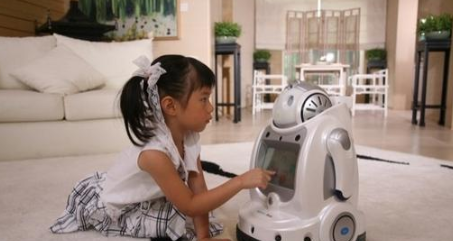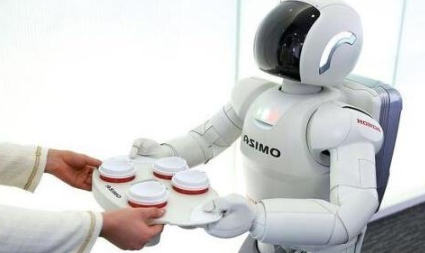Fan Cheng Opportunities and challenges of service robots
Published on:2020-07-16
According to the latest statistical data, the development of industrial robots has entered the stage of quantitative production. The arrival of the era of large-scale robots has brought changes in production technology, and has been widely used in automobile production, industrial manufacturing and other fields. The development of industrial robots has become mature and the market is relatively stable. However, the service robot is in the initial stage of market expansion and has a huge potential consumer market. Although many enterprises at the global leading level of science and technology have begun to set foot in the service robot manufacturers, the new products have been released for a short time, the competitive pressure is relatively small, and different types of new products are gradually coming out, With the continuous progress of intelligent technology, from industrialization to concentration, there will also be "four family" enterprises in the field of industrial robots.

With the improvement of domestic productivity and the increase of residents income, peoples demand for living consumption is also higher and higher. In 2015, the per capita disposable income of urban residents reached 31195 yuan, and the Engels coefficient of urban residents decreased from 38.2% in 2000 to 35 in 2013. The increase of per capita disposable income has also led to changes in peoples consumption structure and demand. The new generation of intelligent terminals represented by service robots have been rapidly popularized, which is expected to become the second generation of intelligent terminals after computers and mobile phones, It is an important carrier connecting the virtual world and the real world.
In the global service robot production system, the production of domestic robots is the first to realize quantification. According to incomplete statistics, in 2014, the global service robot market sales were about US $5.97 billion. From 2011 to 2014, the global service robot sales CAGR was about 11%, of which the professional service robot market share was 63.1%; The market share of home service robots is 36.9%. However, the leading data does not mean that the market of professional service robots is more prosperous. The cost of professional robots is higher, and the scope of application is limited by specialty. The development of household service robots is closer to the daily life of consumers, with lower cost and broader market prospect. In recent years, the sales volume of home service robots is increasing year by year. In 2017, the market scale of service robots will be close to US $50 billion, and the total demand will reach 31.6 million sets / set. It will become the market with the most growth potential, and will eventually surpass professional robots and become a pillar industry of the robot consumer market.

At this stage, China is about to enter an aging society, the number of the elderly is gradually increasing, the human cost of the service industry is rising year by year, people have higher and higher requirements for personalized and professional services, and the changes in lifestyle brought about by the increase of income have become a strong driving force to promote the development of the machine industry. With the implementation of industrial Internet and industrial 4.0 policy, artificial intelligence has developed rapidly, meeting peoples demand for higher-level service robots, which also shows us the broad space for the development of robot industry in the future.
With the increase of human resource cost, robots replace human beings in production and management, which is the inevitable trend of industrial development in the future. According to statistics, the average salary of Chinese manufacturing employees increased from 12671 yuan in 2003 to 51369 yuan in 2014, an increase of 305.41%, and the salary of education employees increased from 14189 yuan in 2003 to 56580 yuan in 2014, an increase of 298.73%. In just a decade, the cost of human resources in China has doubled, and Chinas labor-intensive industrial model has lost its advantages. In fact, as early as ten years ago, developed countries in Europe and the United States began the industrial process of replacing artificial robots. Tens of thousands of robots are active in production lines all over the world, which has greatly driven the progress of productivity, which is also an important driving force for the development of service-oriented robot industry.
Compared with Germany, the United States and other developed countries, Chinas service robot industry rose relatively late and began to take shape in 2005, which is still far from the international cutting-edge robot technology. However, the development of Chinas local service robot is easier to carry out market positioning in combination with the local culture and environment, so as to have its own competitive advantage. From the perspective of the development process of service robot, the service robot industry in various countries is in an emerging stage. It has been established for a short time, and there is still a lot of growth space for the development of Chinas robot industry.

With the improvement of domestic productivity and the increase of residents income, peoples demand for living consumption is also higher and higher. In 2015, the per capita disposable income of urban residents reached 31195 yuan, and the Engels coefficient of urban residents decreased from 38.2% in 2000 to 35 in 2013. The increase of per capita disposable income has also led to changes in peoples consumption structure and demand. The new generation of intelligent terminals represented by service robots have been rapidly popularized, which is expected to become the second generation of intelligent terminals after computers and mobile phones, It is an important carrier connecting the virtual world and the real world.
In the global service robot production system, the production of domestic robots is the first to realize quantification. According to incomplete statistics, in 2014, the global service robot market sales were about US $5.97 billion. From 2011 to 2014, the global service robot sales CAGR was about 11%, of which the professional service robot market share was 63.1%; The market share of home service robots is 36.9%. However, the leading data does not mean that the market of professional service robots is more prosperous. The cost of professional robots is higher, and the scope of application is limited by specialty. The development of household service robots is closer to the daily life of consumers, with lower cost and broader market prospect. In recent years, the sales volume of home service robots is increasing year by year. In 2017, the market scale of service robots will be close to US $50 billion, and the total demand will reach 31.6 million sets / set. It will become the market with the most growth potential, and will eventually surpass professional robots and become a pillar industry of the robot consumer market.

At this stage, China is about to enter an aging society, the number of the elderly is gradually increasing, the human cost of the service industry is rising year by year, people have higher and higher requirements for personalized and professional services, and the changes in lifestyle brought about by the increase of income have become a strong driving force to promote the development of the machine industry. With the implementation of industrial Internet and industrial 4.0 policy, artificial intelligence has developed rapidly, meeting peoples demand for higher-level service robots, which also shows us the broad space for the development of robot industry in the future.
With the increase of human resource cost, robots replace human beings in production and management, which is the inevitable trend of industrial development in the future. According to statistics, the average salary of Chinese manufacturing employees increased from 12671 yuan in 2003 to 51369 yuan in 2014, an increase of 305.41%, and the salary of education employees increased from 14189 yuan in 2003 to 56580 yuan in 2014, an increase of 298.73%. In just a decade, the cost of human resources in China has doubled, and Chinas labor-intensive industrial model has lost its advantages. In fact, as early as ten years ago, developed countries in Europe and the United States began the industrial process of replacing artificial robots. Tens of thousands of robots are active in production lines all over the world, which has greatly driven the progress of productivity, which is also an important driving force for the development of service-oriented robot industry.
Compared with Germany, the United States and other developed countries, Chinas service robot industry rose relatively late and began to take shape in 2005, which is still far from the international cutting-edge robot technology. However, the development of Chinas local service robot is easier to carry out market positioning in combination with the local culture and environment, so as to have its own competitive advantage. From the perspective of the development process of service robot, the service robot industry in various countries is in an emerging stage. It has been established for a short time, and there is still a lot of growth space for the development of Chinas robot industry.

